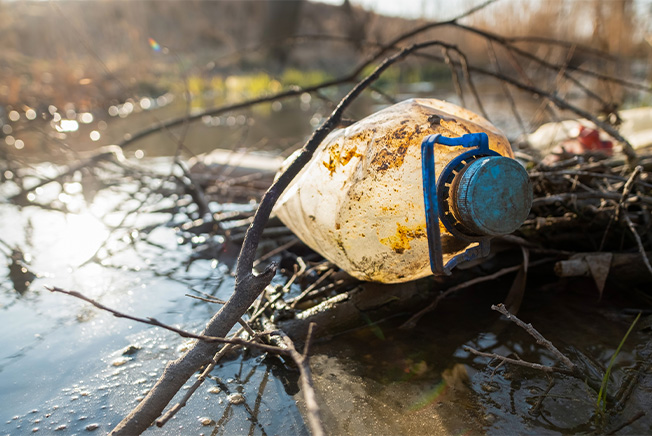When people talk about water damage, the image that often comes to mind involves shag carpets soaked through and peeling wallpaper. But have you ever considered the environmental impacts? The aftermath of water damage can stretch far beyond physical destruction, deeply affecting ecosystems. Now embark on this journey to uncover the unforeseen environmental impacts of water damage.
Conceptualizing Water Damage
Water damage could be a result of varying causes, such as flooding due to heavy rainfall, pipe bursts, or even a simple leak in your home. Appliances that malfunction can also result in water damage if not quickly rectified. It’s crucial people recognize these factors in order to prevent or mitigate potential environmental implications.
For understanding how water damage affects the environment, it’s important to first comprehend the different types of water involved. Water found indoors can be classified into three categories: clean, gray, and black. Clean water does zero to minimum harm whereas gray water contains contaminants and black is heavily polluted – potentially hazardous to humans and environment alike.
The nature and degree of environmental impact hinge largely upon these categories. For comprehensive insights regarding the subject matter, click here. For instance, if black water permeates into groundwater or bodies of surface water, it could spawn serious ecological issues.
And yet, this barely scratches the surface of the situation – even clean water can induce problems if it causes soil erosion or disrupts local habitats! Yes indeed; even ‘pure’ H2O can prove to be pretty damaging under specific circumstances.
Environmental Effects of Flooding
To visualize large-scale water damage, you need to look no further than natural disasters like floods. They hold dual-edged repercussions. Whilst they’re part of the natural lifecycle of numerous ecosystems, unnatural or unusually severe floods induced by climate change exhibit detrimental effects.
Torrential downpour can trigger overflows in rivers and groundwater reservoirs, leading to widespread inundation. Implicitly, flooding results in the displacement of entire human communities, aside from consequent disastrous impacts on flora and fauna – ultimately dismantling complete ecosystems!
The floodwaters carry pollutants from various sources, contaminating bodies of water such as ponds, lakes, and rivers that host multiple aquatic species. There is a social and economic importance to water, and it is noted that this could upset the biodiversity and cause imbalances in nature.
Unsurprisingly, the path to recovery post-flooding necessitates rigorous environmental rehabilitation efforts, which inherently demands considerable time and resources.
Impact on Soil and Vegetation
Water damage has a profound effect on soil and vegetation; it’s not always visible at first glance. Sweeping floods often lead to considerable soil erosion, stripping land of its fertile topsoil – essential for plant growth and survival.
By impairing soil structure, water damage can cause devastating long-lasting damage to agricultural lands. Consequently, farmers suffer low crop yields due to nutrient-deficient soils. This disruption in agricultural productivity can stimulate food scarcity concerns in many regions worldwide.
Furthermore, the excess water can lead to waterlogging in soil – depriving plant roots of crucial oxygen. As a result, many plants drown and die off causing a domino effect on other ecosystem inhabitants it initially sustained.
The aftermath is generally desertification in many parts of the world; witnessing barren lands where lush greenery once thrived.
Water Pollution After Damage
In the wake of water damage events like floods or pipe leaks, one of the most detrimental environmental impacts is water pollution. After a flood, the receding water leaves pools of stagnant water, ideal breeding grounds for disease carrying mosquitoes and other pests.
Furthermore, floodwaters often mix with sewage and other waste material, creating a toxic cocktail that percolates into the ground or seeps into bodies of water. This contamination severely affects the quality of groundwater resources, impacting agricultural practices, human health, as well as the survival of aquatic life.
In urban settings, water damage can result in wastewater or harmful chemicals washing off into storm drains that directly feed into rivers and lakes—introducing pollutants into these ecosystems that harm marine life and affect water safety for human use.
To battle this crisis, it’s critical to implement effective water management strategies swiftly post-disaster to prevent potential outbreaks and protect precious water resources.
Effects on Wildlife Habitats
The impact of water damage invariably extends to wildlife habitats too. Inundation due to heavy rains or flooding can annihilate smaller ecosystems, pushing animals out of their habitats.
For aquatic species, floods introduce contaminants that can compromise their oxygen supply, disrupt reproduction cycles, and cause extensive mortality. Furthermore, animals that rely on certain plants for food may go hungry if those plants are destroyed by standing water or soil erosion.
Nesting sites for birds or small mammals can be washed away during heavy rainfall or when flooding occurs. Displaced animals face increased competition for food and shelter – consequently leading to population decline or migration to potentially unsuitable habitats.
By turning a spotlight on these issues, we’d hopefully incite proactive steps towards minimizing damage and champion eco-conscious behaviors. Indeed, every ripple of action matters in the face of these cascading environmental impacts.
Water Damage and Human Health
One of the most dire consequences of water damage relates to human health. Water polluted by flooding can lead to an array of health issues from minor illnesses to life-threatening diseases.
Inundation causes sewage systems to overflow into residential areas which escalates risks of gastroenteritis – resulting from exposure to pathogens found in wastewater such as E.coli or salmonella. Stagnant water left behind post-flood also proffers ideal breeding grounds for disease vectors like mosquitoes – contributing to outbreaks of malaria, dengue, and Zika virus.
Moreover, exposure to contaminants in flood water or moisture-laden air within homes can provoke respiratory issues or skin infections. Plus, mental health challenges such as Post-Traumatic Stress Disorder (PTSD) may develop following extreme water damage experiences.
In the face of these risks, addressing immediate and prolonged health impacts are critical parts of comprehensive disaster management strategies.
Preventing Negative Environmental Impact
Preventing and reducing the environmental consequences linked with water damage is a multifaceted process. It spans across individual households to huge infrastructural projects and legislative norms.
For households, it starts with adopting proper home maintenance routines – regularly checking plumbing pipes or roofs for leaks and maintaining gutters can mitigate risks of local water damage. Installing appliances like water leak detectors can also help prevent potential mishaps.
The Water Damage Specialist emphasizes on crafting integrated action plans that prioritize flood risk reduction and restoration. This can be accomplished through adoption of green infrastructure practices that absorb runoff—like rain gardens or permeable pavements—and better stormwater management systems.
In parallel, people need stringent legislation imposing strict penalties for industrial and agricultural pollution of water bodies. Encouraging buffer zones around delicate habitats too can safeguard them from negative impacts of nearby development projects.
All these measures when coupled together offer hope in witnessing less dire impacts and more resilient ecosystems in the face of water damage instances.
A Conclusive Note
The environmental impacts of water damage stretch far beyond its initial physical destruction. It has lasting ramifications on the climate, the land, biodiversity, and significantly on human health. While certain aspects, such as floods are unavoidable natural disasters, adequate preparation can considerably mitigate their damage potential.
Education and awareness remain central to motivating individuals, communities and governments alike towards preventing and reducing these damaging impacts – ensuring healthier ecosystems in an era of escalating climate change.
*See our Disclaimer for release information.


